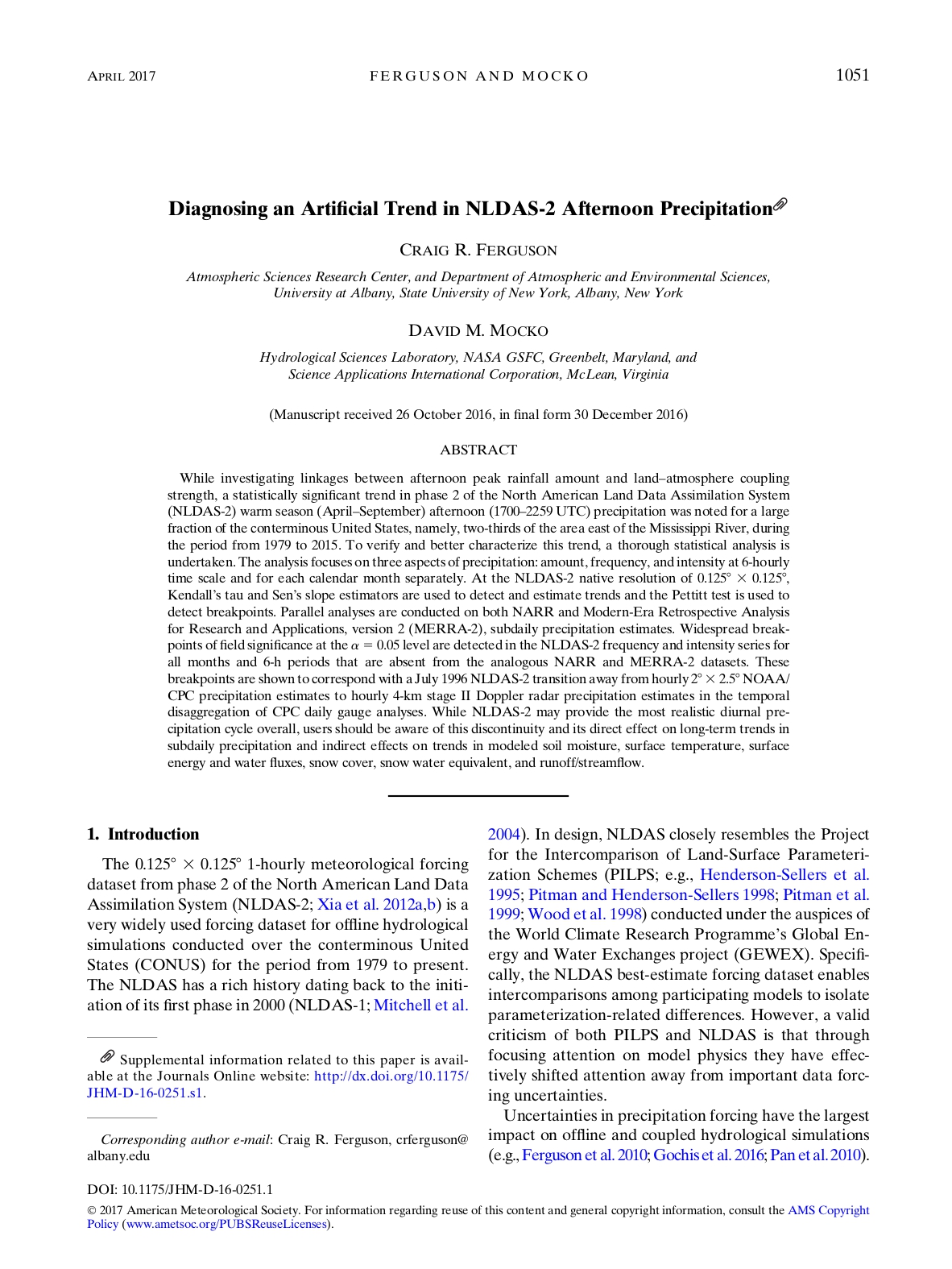While investigating linkages between afternoon peak rainfall amount and land–atmosphere coupling strength, a statistically significant trend in phase 2 of the North American Land Data Assimilation System (NLDAS-2) warm season (April–September) afternoon (1700–2259 UTC) precipitation was noted for a large fraction of the conterminous United States, namely, two-thirds of the area east of the Mississippi River, during the period from 1979 to 2015. To verify and better characterize this trend, a thorough statistical analysis is undertaken. The analysis focuses on three aspects of precipitation: amount, frequency, and intensity at 6-hourly time scale and for each calendar month separately. At the NLDAS-2 native resolution of 0.1258 3 0.1258, Kendall’s tau and Sen’s slope estimators are used to detect and estimate trends and the Pettitt test is used to detect breakpoints. Parallel analyses are conducted on both NARR and Modern-Era Retrospective Analysis for Research and Applications, version 2 (MERRA-2), subdaily precipitation estimates. Widespread breakpoints of field significance at the a 5 0.05 level are detected in the NLDAS-2 frequency and intensity series for all months and 6-h periods that are absent from the analogous NARR and MERRA-2 datasets. These breakpoints are shown to correspond with a July 1996 NLDAS-2 transition away from hourly 28 3 2.58 NOAA/CPC precipitation estimates to hourly 4-km stage II Doppler radar precipitation estimates in the temporal disaggregation of CPC daily gauge analyses. While NLDAS-2 may provide the most realistic diurnal precipitation cycle overall, users should be aware of this discontinuity and its direct effect on long-term trends in subdaily precipitation and indirect effects on trends in modeled soil moisture, surface temperature, surface energy and water fluxes, snow cover, snow water equivalent, and runoff/streamflow.
5
Diagnosing an Artificial Trend in NLDAS-2 Afternoon Precipitation
Craig R. Ferguson dan David M. Mocko
Penerbit :
American Meteorological Society
Tahun :
2016
epaper
-
No Scan
-
No Klasifikasi551.577
-
ISBN
-
ISSN
-
No Registrasi
-
Lokasi TerbitUnited States
-
Jumlah Hal20
-
Label
-
Versi DigitalTIDAK
-
Versi FisikTIDAK
-
Lokasi Rak Buku Fisik//
-
Jumlah Exemplar Fisik Tersedia-




